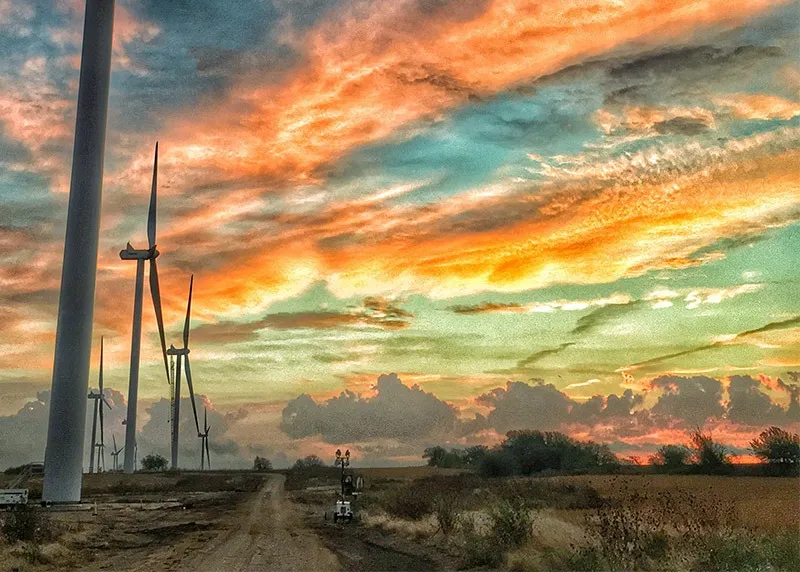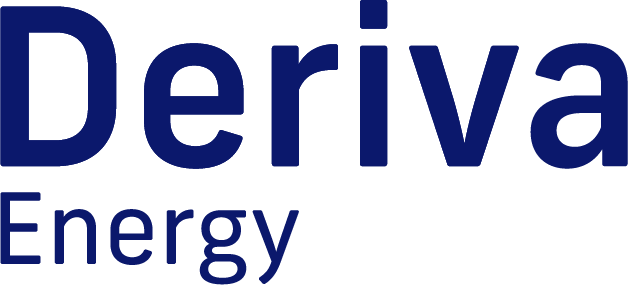
Wind power is gaining traction worldwide as a major source of renewable energy and electricity. To meet the growing demand for alternative energy sources, nearly 57,000 wind power turbines are generating over 97,000 MW of clean energy on wind farms on land and at sea across the United States.
In fact, wind power generation capacity in the U.S. has more than tripled over the past 10 years. Since the end of 2016, wind power has been the biggest renewable energy source in the U.S. This includes utility-scale projects in 41 states, distributed wind systems in all 50, and a handful of offshore projects.
As great growth is taking place, wind power in many states now exceeds 25% of total energy needs for electricity. Nationwide, wind power is expected to provide 20% of all the electricity needs in the U.S. by 2030. Commercial and industrial corporations in particular, both local and nationwide, are driving demand and creating new markets for wind energy for businesses.
What is Wind Energy for Businesses?

Numerous corporations, businesses, farms, schools, and entire communities are already harnessing the power of the wind to fuel their energy needs. As wind turbine systems come in many sizes, they can accommodate a range of energy needs.
Wind turbines turn the kinetic energy in the wind into mechanical power or electricity. Turbine blades rotate due to the wind, which spins a shaft that connects to a generator.
Onshore wind turbines range in size, with older turbines typically providing 1 megawatt (MW) of average generation capacity and newer model turbines providing about 3 MW. Wind speeds of 30 to 55 mph are excellent for generating electricity on land.
Offshore turbines, on the other hand, are much larger. A single turbine can exceed 9 MW of generation capacity, and can either reach the ocean floor or operate as a floating platform. In the U.S., offshore wind’s huge generation potential is its biggest advantage. It has the potential to generate more than twice the amount of energy that the entire country uses in a year (over 2,000 GW). On the downside, offshore wind requires significant investment in infrastructure to bring all of the energy to land.
Commercial on-site wind turbines sit in their own unique segment of the wind market, one that lies between residential and industrial- or utility-scale wind turbines. Commercial wind turbines usually have a capacity below 100 kW – anything larger is considered utility-scale. Many site owners will add multiple turbine systems to a single site. A 10-kW on-site system can produce up to 10,000 kilowatt-hours per year of renewable electricity.
Once installed or built, only regular maintenance of the wind generator, tower and transmission lines are required. However, unlike conventional power plants, there is no fuel required. No pipelines. No oil trains or ground transportation. And no post-production waste stream or emissions for decades as each turbine turns.
Is Wind Energy Renewable and Reliable?

The reality is that no energy source is 100% reliable. However, wind and solar are surprisingly resilient power sources in the face of disasters.
During the Polar Vortex of 2014, for example, extreme cold froze coal piles and natural gas pipelines failed. During that same time, wind turbines kept turning. This enabled Great Lakes and Mid-Atlantic consumers to keep the lights on while saving over $1 billion in just two days.
Hurricanes alone can cause hundreds of billions of dollars of damage in the U.S. every year while leaving homes and vital services without electricity. They also derail conventional power generation.
When Hurricane Harvey hit the U.S. in 2017, coal yards in Texas flooded and caused power plants to go offline, while nuclear facilities in Florida were also shut down as a precaution due to the superstorm. Weeks after the superstorm, an estimated 4,000 homes were still without power. In total, one hurricane temporarily caused oil and gas production in the region to be shut down, which affected nationwide output.
Texas, a state that generates the most onshore wind in the U.S. and supplies as much as 40% of the state’s energy, saw most of its wind towers continuing to generate power as normal during the same storm, including Duke Energy’s Los Vientos I and Los Vientos II wind farms in Willacy County.
Hurricane Florence, which hit the East Coast in 2018, is another major storm that left 1.9 million homes, services, and businesses without power throughout the Carolinas. Damage to coal generation caused extended outages while wind and solar installations were up and running the next day, many sustaining no damage.
For the future, the power of these increasingly intense storm systems may also become a renewable generation boon. Check out innovations such as the development of typhoon wind turbines.
Accessing Wind Power in Your Region

The Frontier Windpower Project is another good example of how far wind energy has come, generating 200 MW to provide enough emission-free electricity to power 60,000 homes.
Renewable energy is not perfect. When it comes to wind power you will still want to assess whether or not wind resources are plentiful enough at your location to provide the output you require, sustainably. You can do this a couple of ways.
A good place to begin is with this wind map of the U.S. It can help you get a broad idea of wind resources in your area. In general, if your business is located in a coastal area, along a ridgeline, or in the Great Plains region, you’ll probably have plenty of consistent wind. To determine if your site is right for wind energy, use a wind site assessor and/or a data collection system.
How Can My Business Benefit From Wind Energy Solutions?
To become the leading renewable energy source in the U.S., wind generation innovations have come fast and furiously, creating greater value for businesses and communities alike. There are a number of benefits to companies and business owners who convert to wind energy solutions, including:
- A stable source of low-cost power at scale. Although it’s somewhat difficult to predict fluctuations in the cost of electricity, most experts agree that energy costs will continue to rise. When you enter a long-term agreement for renewable energy and/or install your own on-site wind or solar, you take control of your costs as well as emissions. Power Purchase Agreements (PPAs) or Virtual PPAs can establish a price for decades.
- A wealth of tax advantages. There are a wide variety of local and state tax incentives as well as federal tax credit programs including the Production Tax Credit (PTC) and Investment Tax Credit or ITC. Talk with your tax expert or distributed energy development partner to find out more.
- Energy flexibility and control. By nearly every measure, renewable energy generation from wind and solar have exceeded pundits’ predictions from a decade ago. On-site and off-site generation choices have created more ways to monitor and control how much electricity is used and when. That includes storing cleaner-generated electricity on-site through energy storage batteries for when grid-tied power is most expensive or when not renewably generated.
- Environmental sustainability. By producing and using clean, renewable energy, your company will lower the greenhouse gas (GHG) emissions you generate, and thus help fight the effects of climate change and other environmental threats. Many major corporations are committing to 100% renewable energy as a means to lower their carbon footprint and quantifiably illustrate their sustainability commitment. Off-site wind power combined with on-site solar and batteries has created a new model that is cutting more emissions, including the need for fossil-fueled, high-emitting, rarely-used peaker plants.

Where Can I Find Out More About Wind Energy Solutions?
Duke Energy Renewables, a nonregulated unit of Duke Energy, operates wind and solar generation facilities across the U.S., with a total electric capacity of 3,000 megawatts. The power is sold to electric utilities, electric cooperatives, municipalities, and commercial and industrial customers. The unit also operates energy storage and microgrid projects.
